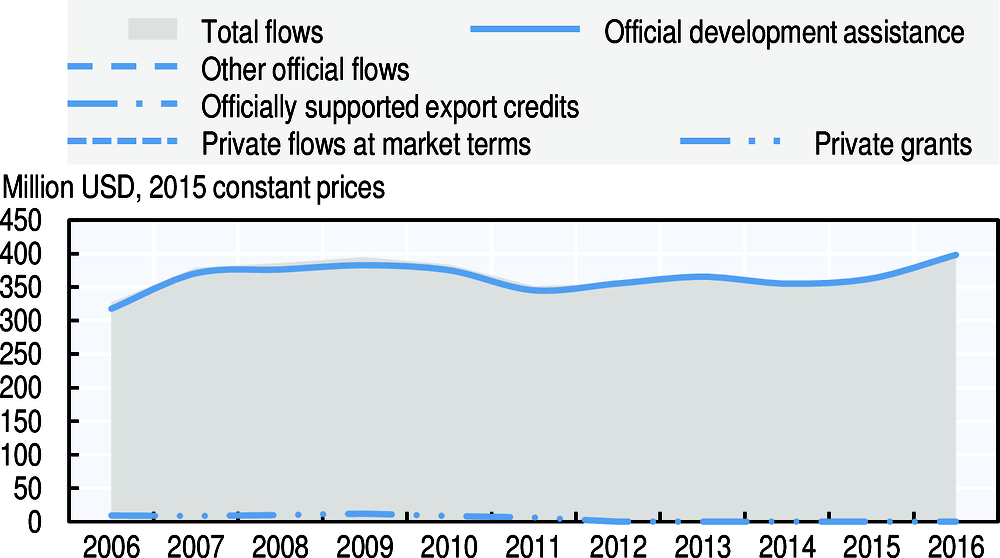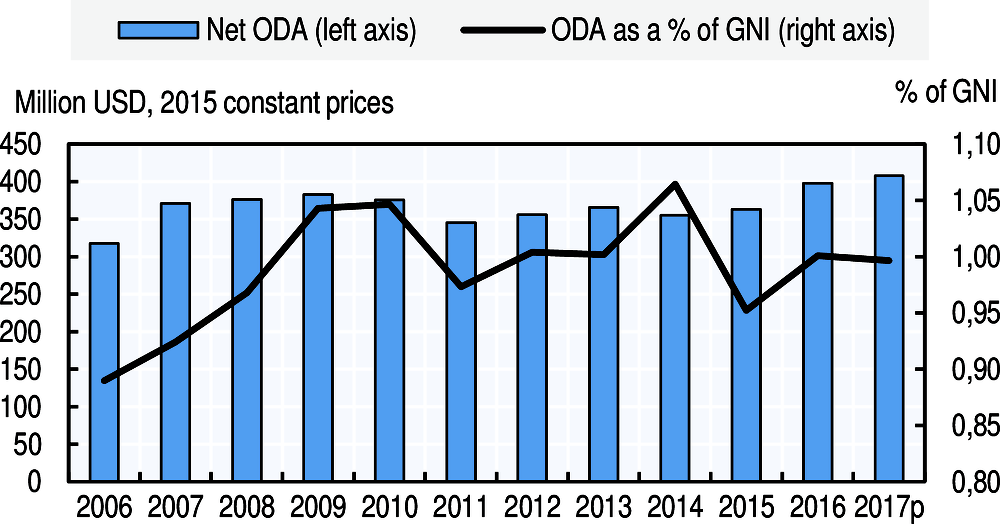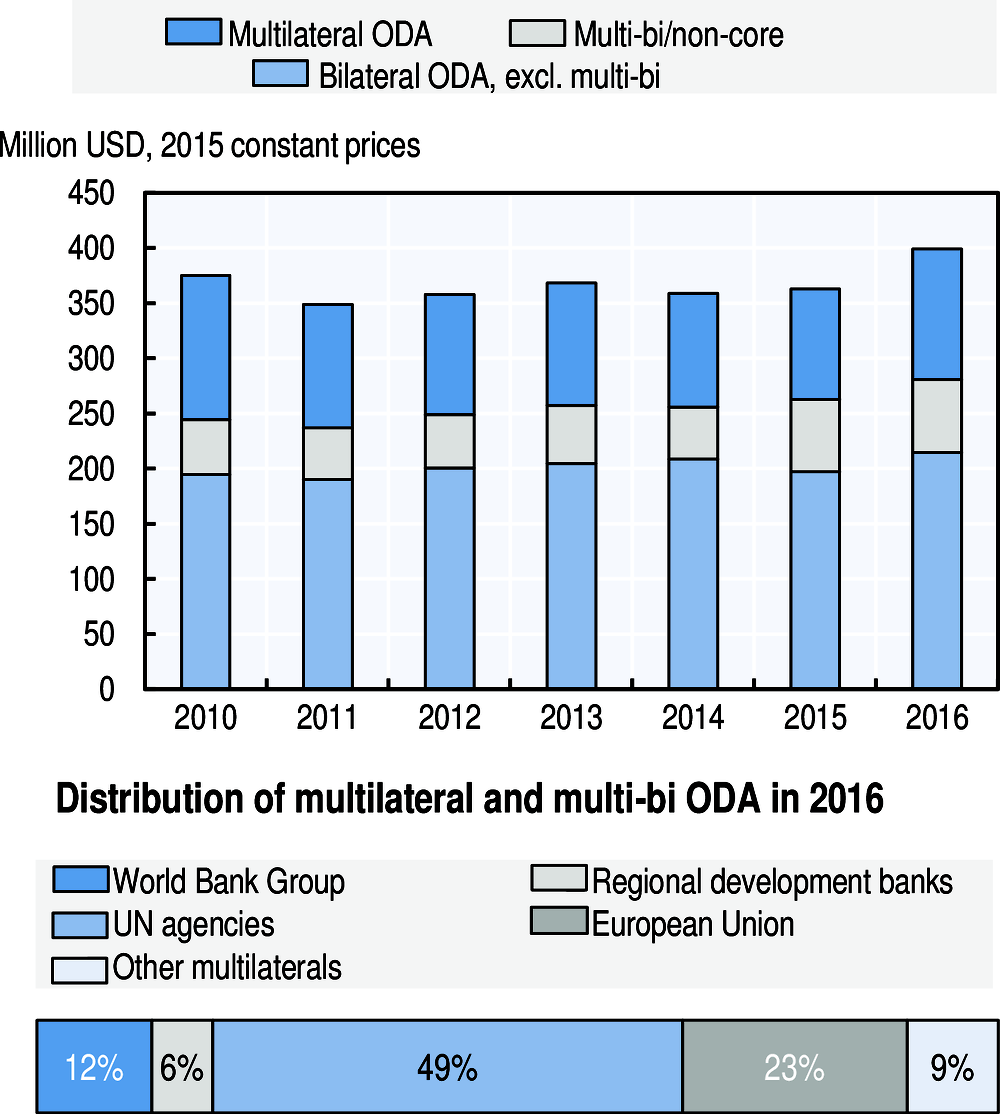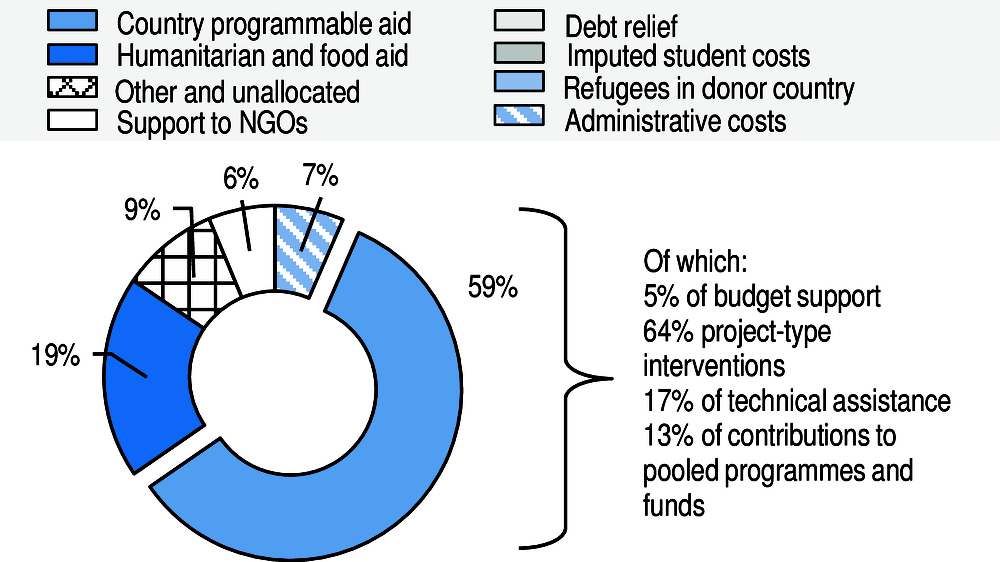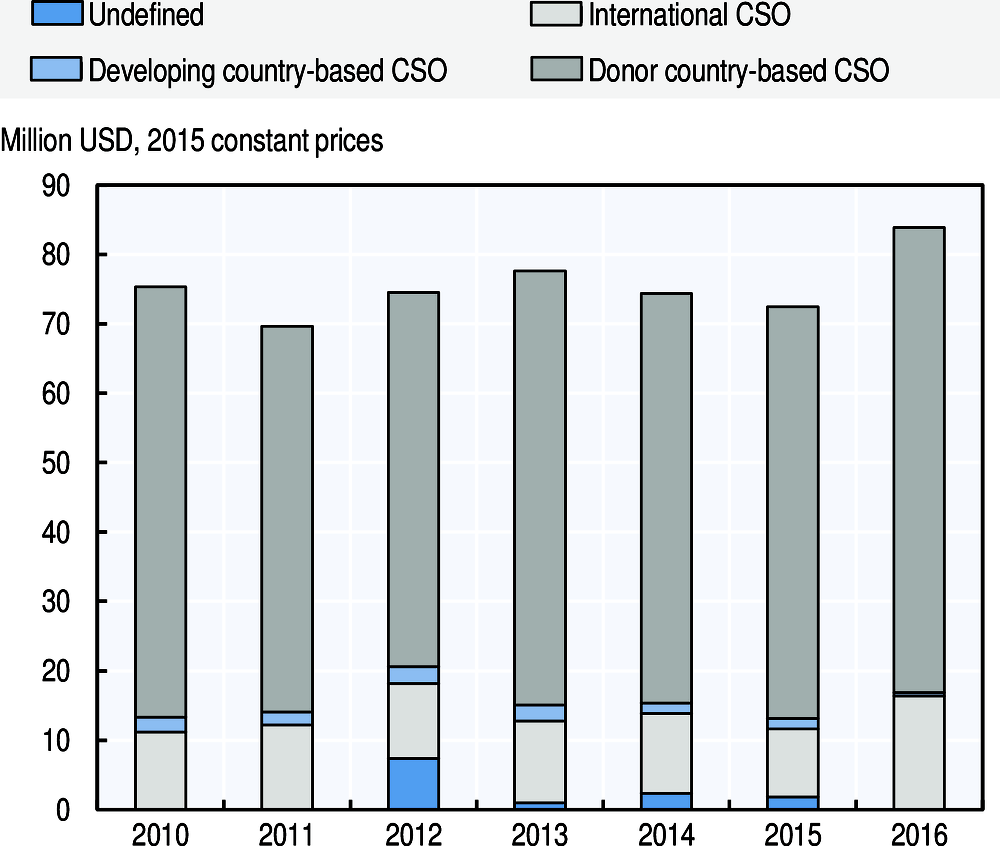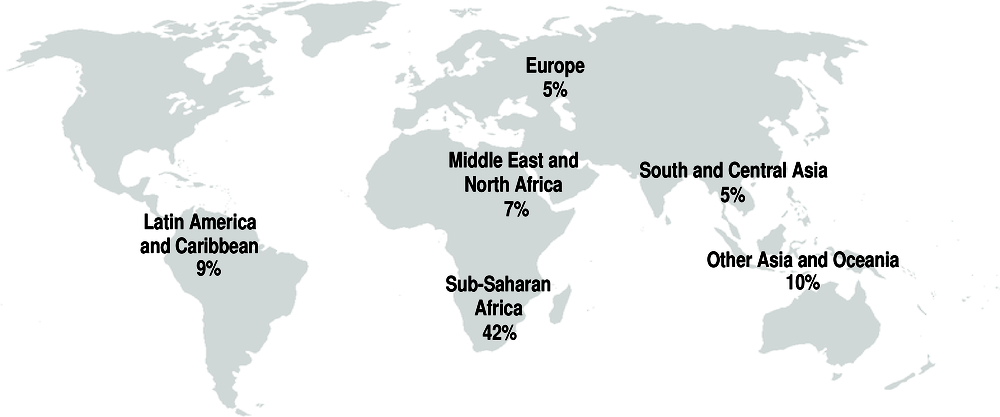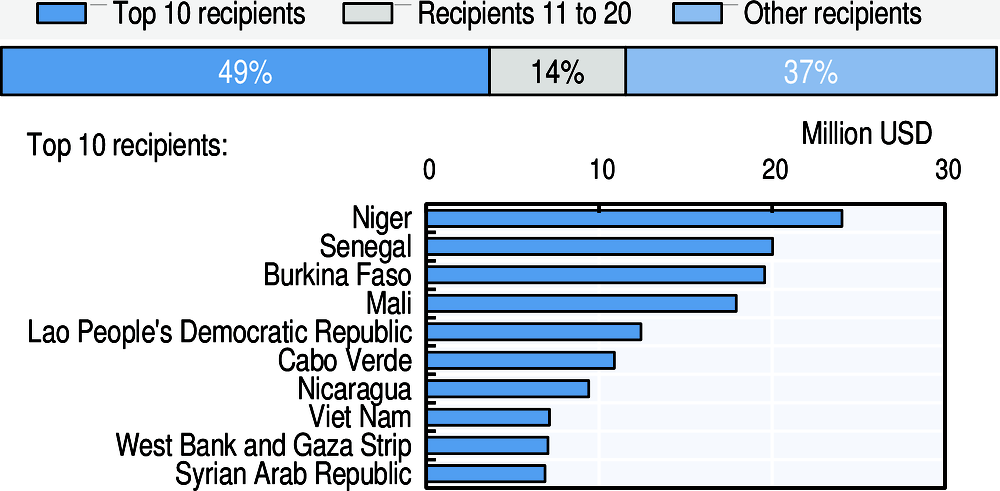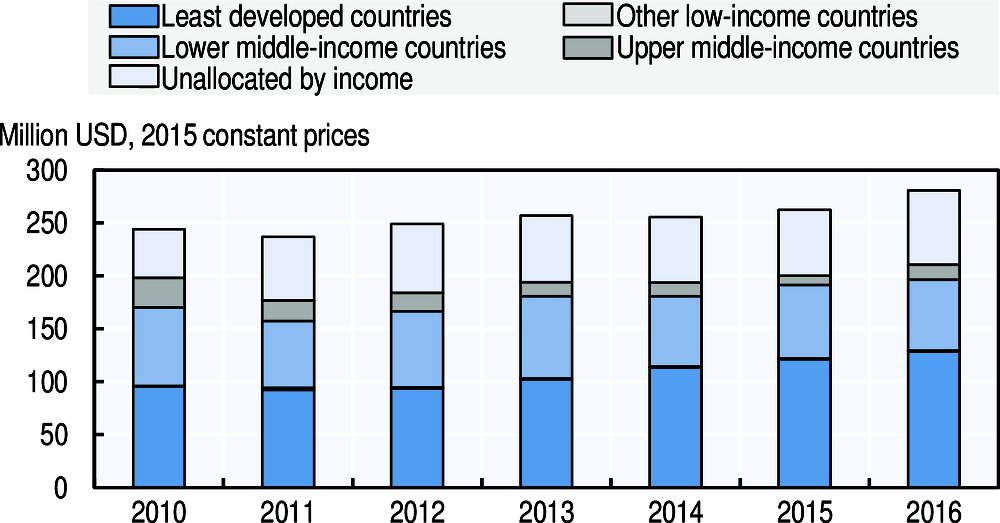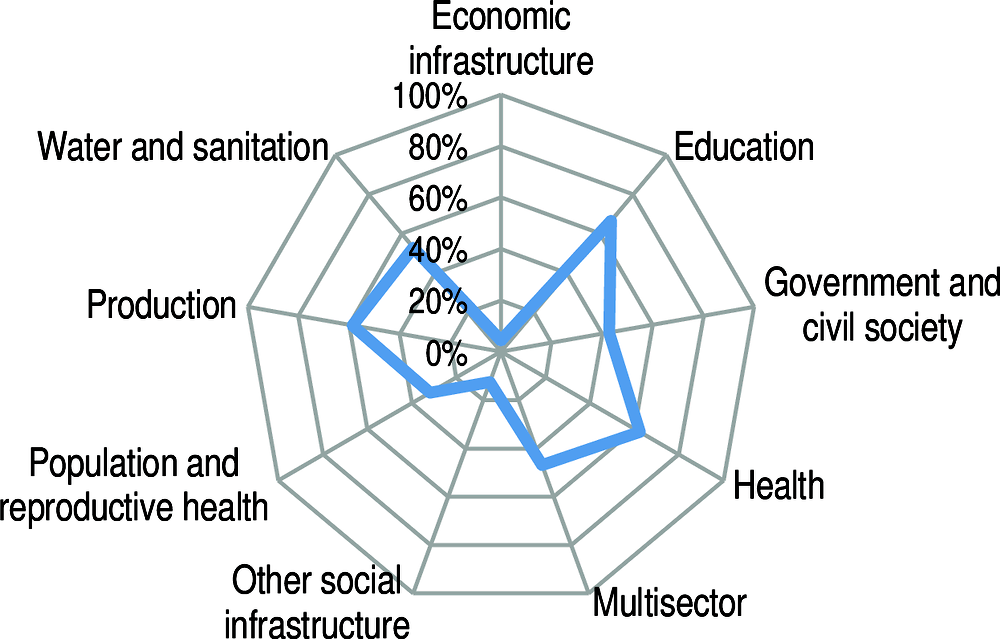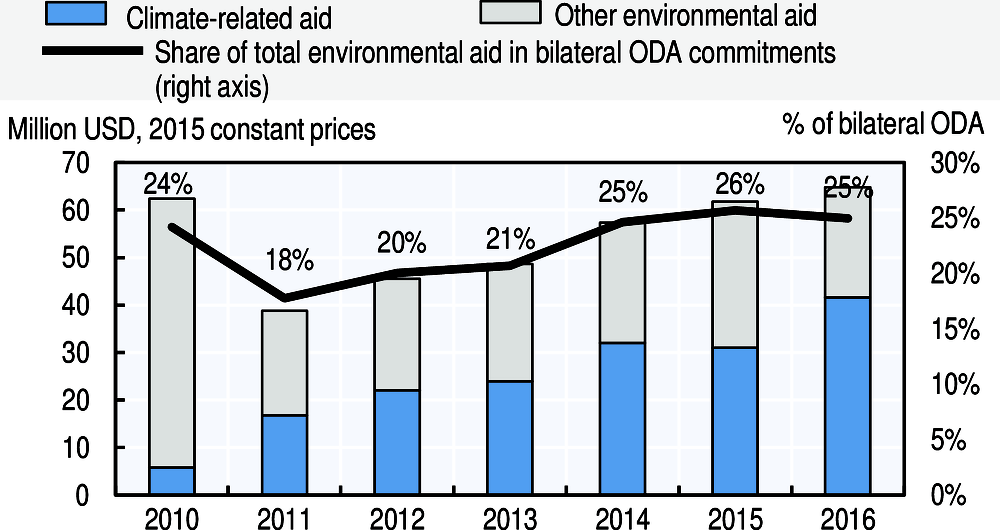Luxembourg
Leaving no one behind: Luxembourg’s approach and priorities
Luxembourg plans to make a commitment to leaving no one behind in its forthcoming development co-operation strategy (July 2018). Its Laws on Development Co-operation (1996 and 2012) require it to focus on least developed countries and fragile contexts. At present, leaving no one behind is an implicit principle of its programmes with seven partner countries and its humanitarian strategy, which prioritise the most vulnerable and deprived populations.
For Luxembourg, adopting a leave no one behind approach can help increase awareness and evidence of the root causes of social, economic and political exclusion and the need to use multidimensional poverty measures, thus allowing for better planning and targeting of populations and areas most in need from an early stage. It sees a range of data challenges to making progress – data gaps; quality; the cost of conducting deeper, more fine-tuned analyses; and modest statistical capacity. It believes the principle of leaving no one behind should have concrete measures that are applied and monitored in programming to succeed.
In its programming, Luxembourg addresses leaving no one behind through its overall objective of poverty reduction and eradication in a sustainable development framework. To identify and map vulnerabilities, it conducts studies and assessments, using complementary data, reports and studies by national governments, civil society and international development partners.
Financial flows from Luxembourg to developing countries
Luxembourg’s performance against commitments for effective development co-operation
Luxembourg’s official development assistance
In 2017, Luxembourg provided USD 424 million in net ODA (preliminary data), which represented 1% of gross national income (GNI) and an increase of 4.4% in real terms from 2016 in line with increases in its overall aid programme. Luxembourg is one of only five Development Assistance Committee (DAC) members to have met the UN target of 0.7% in 2017. Luxembourg did not report in-donor refugee costs as official development assistance (ODA) in 2017.
Luxembourg’s share of untied ODA (excluding administrative costs and in-donor refugee costs) slightly decreased from 98.8% in 2015 to 98.5% in 2016, and is above the DAC average of 81.2%. The grant element of total ODA was 100% in 2016.
In 2016, 70.4% of ODA was provided bilaterally. Luxembourg allocated 29.6% of total ODA as core contributions to multilateral organisations. In addition, it channelled 23.6% of its bilateral ODA for specific projects implemented by multilateral organisations (multi-bi/non-core contributions).
In 2016, 58.9% of bilateral ODA was programmed with partner countries. Luxembourg’s share of country programmable aid was above the 2016 DAC country average of 46.8% in 2016 and project-type interventions made up 64% of this aid.
In 2016, USD 82.4 million of bilateral ODA was channelled to and through civil society organisations (CSOs). ODA channelled to and through CSOs increased between 2015 and 2016 as a share of bilateral ODA (from 27.6% in 2015 to 29.9% in 2016).
Bilateral ODA was primarily focused on sub-Saharan Africa. In 2016, USD 116 million was allocated to sub-Saharan Africa and USD 26.4 million to Far East Asia.
In 2016, 49% of bilateral ODA went to Luxembourg’s top 10 recipients. Luxembourg has nine priority partner countries, eight of them are among its top 10 recipients. In 2016, its support to fragile contexts reached USD 123.9 million in 2016 (45% of gross bilateral ODA). Support to fragile contexts consisted mainly of project-type interventions (58%) and contributions to pooled funds (27%).
In 2016, 45.9% of bilateral ODA was allocated to least developed countries (LDCs), amounting to USD 126.5 million. The share has remained stable from 46.2% in 2015 and is above the 2016 DAC average of 21.9%. The LDCs received the highest share of bilateral ODA in 2016 compared with other income groups.
At 0.42% of Luxembourg’s GNI in 2016, total ODA to the LDCs exceeds the UN target of 0.15% of GNI.
In 2016, 46% of bilateral ODA was allocated to social infrastructure and services, or USD 126.9 million, with a strong focus on education (USD 51 million), health (USD 26.3 million), and government and civil society (USD 25.7 million). Humanitarian aid amounted to USD 49 million. In 2016, Luxembourg committed USD 36.9 million (14.5% of bilateral allocable aid) to promote aid for trade and to improve developing countries’ trade performance and integration into the world economy.
USD 85.4 million of bilateral ODA supported gender equality. In 2016, 33.5% of its bilateral allocable aid had gender equality and women’s empowerment as a principal or significant objective, compared with the DAC country average of 36.5%. This has remained stable from 33.2% in 2015.
USD 63.7 million of bilateral ODA supported the environment in 2016. In 2016, 25% of its bilateral allocable aid supported the environment and 16% (USD 40.8 million) focused particularly on climate change, compared with the respective DAC country averages of 33% and 25.7%.
Note to reader: Annex B provides “Methodological notes on the profiles of Development Assistance Committee members”.

